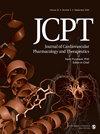心血管疾病和退伍军人身份与生理和心理功能损伤的关联:美国国家调查数据的回顾性横断面分析
IF 2.8
4区 医学
Q2 CARDIAC & CARDIOVASCULAR SYSTEMS
Journal of Cardiovascular Pharmacology and Therapeutics
Pub Date : 2022-01-01
DOI:10.1177/10742484221091015
引用次数: 0
摘要
简介:退伍军人健康管理局(VHA)为糖尿病和肥胖症提供多学科团队护理和点对点支持,但不包括大多数心脏病。目的:为患有或高危心脏病的退伍军人提供疾病护理模式,评估其生理和心理功能。方法:基于自评健康、严重心理困扰和高危物质使用的标准功能指标,对2015-2019年全国药物使用与健康调查数据进行回顾性、横断面队列分析。队列是患有被调查者报告的心脏病或基于年龄/合并症组合(HD/risk)的心血管疾病高风险的退伍军人;非退伍军人HD/风险;以及没有HD/风险的退伍军人。调整了人口统计学、健康的社会决定因素和慢性病的有序逻辑回归模型。由于样本量大(N = 28,314),先验alpha设为0.01。结果:在HD/危险人群中,退伍军人(n = 3,483)和非退伍军人(n = 16,438)有相似的身体损伤,但退伍军人的痛苦倾向更高(调整后的优势比= 1.36,99%可信区间[CI] = 0.99-1.86)。在合并HD/风险和行为健康问题的患者中,退伍军人和有心理症状的非退伍军人(分别为55.9%对55.2%,P = 0.531)或高危物质使用(18.7%对19.4%,P = 0.547)的回归校正治疗率相似;退伍军人更有可能接受门诊心理健康治疗(36.1% [CI = 34.4% ~ 37.8%] vs. 28.9% [CI = 28.2% ~ 29.6%])。结论:与非退伍军人相比,患有HD/风险的退伍军人的痛苦程度呈上升趋势,这不能用行为健康治疗使用的差异来解释。进一步的研究应该测试针对患有HD/风险的退伍军人的多学科团队护理,类似于用于其他慢性疾病的护理。本文章由计算机程序翻译,如有差异,请以英文原文为准。
Association of Cardiovascular Disease and Military Veteran Status With Impairments in Physical and Psychological Functioning: Retrospective Cross-Sectional Analysis of US National Survey Data
Introduction: The Veterans Health Administration (VHA) provides multidisciplinary team-based care with peer-to-peer support for diabetes and obesity, but not for most heart diseases. Objective: To inform disease-care models, assess physical and psychological functioning in veterans with, or at high risk of, heart disease. Methods: Retrospective, cross-sectional cohort analysis of data from the National Survey on Drug Use and Health, 2015-2019, based on standard measures of functioning: self-rated health, serious psychological distress, and high-risk substance use. Cohorts were veterans with respondent-reported heart disease, or at high risk of cardiovascular disease based on age/comorbidity combinations (HD/risk); nonveterans with HD/risk; and veterans without HD/risk. Ordinal logistic regression models adjusted for demographics, social determinants of health, and chronic conditions. A priori alpha was set to 0.01 because of large sample size (N = 28,314). Results: Among those with HD/risk, veterans (n = 3,483) and nonveterans (n = 16,438) had similar physical impairments, but distress trended higher among veterans (adjusted odds ratio = 1.36, 99% confidence interval [CI] = 0.99-1.86). Among those with comorbid HD/risk and behavioral health problems, regression-adjusted treatment rates were similar for veterans and nonveterans with psychological symptoms (55.9% vs. 55.2%, respectively, P = 0.531) or high-risk substance use (18.7% vs. 19.4%, P = .547); veterans were more likely to receive outpatient mental health treatment (36.1% [CI = 34.4%-37.8%] vs. 28.9% [CI = 28.2%-29.6%]). Conclusion: An upward trend in distress among veterans compared with nonveterans with HD/risk was not explained by differences in behavioral health treatment utilization. Further research should test multidisciplinary team-based care for veterans with HD/risk, similar to that used for other chronic diseases.
求助全文
通过发布文献求助,成功后即可免费获取论文全文。
去求助
来源期刊
CiteScore
6.00
自引率
0.00%
发文量
33
审稿时长
6-12 weeks
期刊介绍:
Journal of Cardiovascular Pharmacology and Therapeutics (JCPT) is a peer-reviewed journal that publishes original basic human studies, animal studies, and bench research with potential clinical application to cardiovascular pharmacology and therapeutics. Experimental studies focus on translational research. This journal is a member of the Committee on Publication Ethics (COPE).

 求助内容:
求助内容: 应助结果提醒方式:
应助结果提醒方式:


